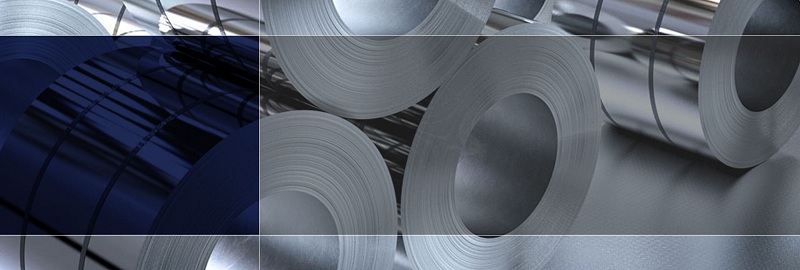
Stainless steel is widely used, its shadow can be seen everywhere in life, and it is equally common in machining. Its corrosion resistance decreases with the increase of carbon content, and the carbon content of most stainless steel is low, the maximum is not more than 1.2%. Due to the characteristics of the material, stainless steel is a more difficult material to process, the difference is large, sticky chips, falling edges are often encountered in the processing of the problem, therefore, choose the right stainless steel processing tool has become the key to solve the problem. 316L stainless steel has high material toughness, high temperature mechanical properties, large viscosity, poor thermal conductivity, work hardening and other processing difficulties, which speeds up tool wear and affects production efficiency.
With the increasing development of the economy, people's pursuit of quality of life is getting higher and higher, and the use of stainless steel closely related to everyone's life has also increased significantly. Nowadays, the laser cutting process of stainless steel thick plate is becoming more and more mature, and it will gradually replace the traditional cutting process. In order to cut high-quality thick plate stainless steel, it is necessary to fully understand the cutting process elements. Laser processing, linear guide guide, guaranteed high speed, high precision, effectively improve the production efficiency of customers.
Control valve, also known as control valve, it is the final control element to change the process parameters such as medium flow, pressure, temperature and liquid level with the help of power operation. In view of the use of the control valve environment, such as high temperature and high pressure, low temperature cryogenic, flammable and explosive, highly toxic, strong corrosive media, etc., the control valve in the material selection of more and more CrNi stainless steel, CrMoV heat-resistant steel, duplex stainless steel, titanium alloy and other materials, most of these materials have high toughness, high strength, poor heat sink, chip viscosity and work hardening tendency, etc. At the same time, the sealing surface of the control valve has higher requirements in processing accuracy, finish and paired sealing, which puts forward more demanding requirements for machining and tool comprehensive performance.

Stainless steel is a kind of high alloy steel that can resist corrosion in the air or chemical corrosive medium. According to the microstructure of steel in the normal state, it can be divided into ferritic stainless steel, austenitic stainless steel and martensitic stainless steel.
When the chromium content reaches 13%, the iron-chromium alloy will undergo γ-free phase transition. When the chromium content reaches 12%, corrosion resistance, so Cr13 ferritic steel becomes ferritic stainless steel. The corrosion resistance and oxidation resistance of ferritic stainless steel are good, especially the stress corrosion resistance is good, but the mechanical properties and process properties are poor, and it is mostly used for acid-resistant structures and anti-oxidation steels with little force. In order to obtain a uniform ferrite structure, reduce carbide precipitation, eliminate intergranular corrosion tendency, and eliminate σ precipitation and 475℃ brittleness, ferritic stainless steel is often quenched, tempered or annealed after hot rolling.
Austenitic stainless steel is developed with 18% Cr-8%Ni as a typical composition. It is characterized by high corrosion resistance (higher than M stainless steel, lower than F stainless steel), and has high plasticity, toughness and low temperature toughness, easy to process into various shapes of steel, with good welding performance, non-magnetic, etc., that is, with good comprehensive mechanical properties, is the largest class of stainless steel. The equilibrium structure of type 18-8 austenitic stainless steel is austenite + ferrite + carbide complex phase structure, and the actual single-phase austenite is obtained by solid solution treatment. The aim is to dissolve both ferrite and carbide into A to obtain A single-phase A.
Martensitic stainless steel contains 12-18% Cr, and compared with ferritic stainless steel, its composition is characterized by a low upper limit of chromium, but also contains a certain amount of carbon and nickel and other gamma phase stabilizing elements. The corrosion resistance and weldability of this kind of steel are worse than that of austenitic and ferritic stainless steel, and the plasticity is worse than that of stainless steel A, but because it has better mechanical properties and the combination of corrosion resistance. The heat treatment method of martensitic stainless steel is first softened, which is equivalent to the preparation of heat treatment steel after forging and rolling, due to air cooling, martensitic transformation will occur, so that the forgings will harden, cracks will occur on the surface of the forgings, and then the tempering treatment and quenching and low temperature tempering.
The Application and Development Trends of High-Performance Silicon Steel in Transformer Cores
2024-12-17What is Stainless Steel Corrugated Board?
2021-07-21Modern Die Technology of Motor Stator and Rotor Iron Core
2023-03-15The way of stainless steel rust prevention
2024-07-11Status &Analysis of Demand for Stainless Steel in Petrochemical Industry
2022-08-02100% Understanding of Austenitic Stainless Steel Sheet Today
2022-03-10






